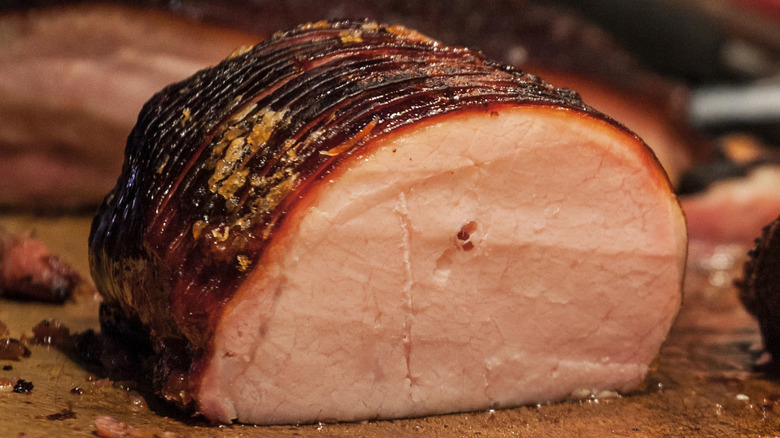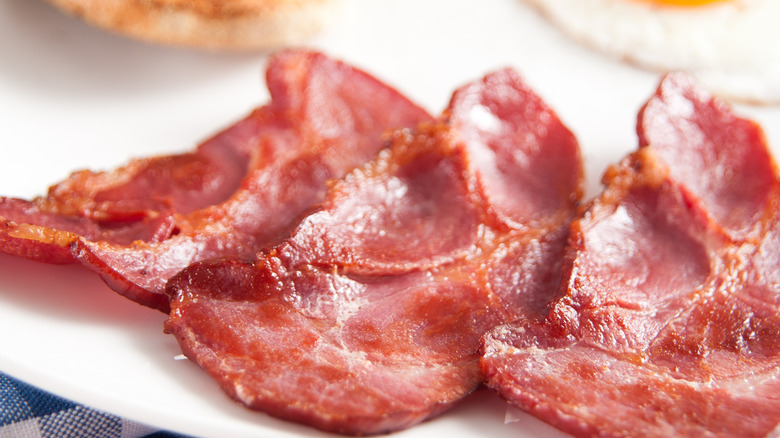You May Want To Pass On The Canadian Bacon At A Restaurant
Unless you're hitting up a designated brunch spot, at most restaurants, brunch is a once-a-week event, on Saturdays and Sundays only. So does that mean restaurants are rolling out the red carpet for these beloved infrequent affairs? Not exactly. In fact, the opposite might be true. It isn't universal industry practice, but brunch is often the thrifty final frontier of the near-death ingredient. As Anthony Bourdain wrote in "Kitchen Confidential," his tell-all magnum opus, "Brunch menus are an open invitation to the cost-conscious chef, a dumping ground for the odd bits left over from Friday and Saturday nights" or "an obvious attempt to offload the aging stuff."
That paints a nefarious picture. But, as unsuspecting brunch-goers slam bottomless mimosas and stumble out buzzed and stuffed by noon, a few bites of less-than-peak-condition meat are likely to slip under the radar. Big deal, right? Short answer: It depends.
Let's zero in on Canadian bacon – the juicy, sweet-salty crossover between American bacon and ham. It's cured, smoked, and with the exception of Hawaiian pizza and pasta carbonara, pretty much always served as a brunch food at restaurants. That means that by the time Sunday finally rolls around, that Canadian bacon could have been sitting in the walk-in cooler for six full days (or even longer).
Extended tenures in the walk-in
Admittedly, a slightly expired slab of Canadian bacon isn't the end of the world. You might not even notice it. Along with providing knockout flavor, salt also acts as a natural preservative, and in heavily salted meat like Canadian bacon, it can cover a multitude of sins. Cooked Canadian bacon can be kept in the fridge for three to four days according to Healthline, or frozen for four to eight weeks. An old lower-quality meat will almost certainly be noticeable if diners are eating a straight-up slab of it. But, to squeeze an extra day or two out of that Canadian bacon, chefs will incorporate it into dishes like eggs Benedict or an omelet.
How can discerning foodies tell the difference? Uncooked Canadian bacon that has passed its prime will emit a slightly sour smell or feel slimy to the touch. These are great giveaways for chefs, but for diners, these warning signs are tough to detect once the bacon is cooked.
To tell if cooked Canadian bacon has gone bad, look for discoloration (a gray or greenish tone). Canadian bacon doesn't have the fat marbling that American bacon does, but if there is any lingering fat intact on your slice, this portion will be the most easily identifiable part to change color. It won't ruin brunch and of course, most restaurants aren't trying to give diners an upset stomach — but to play it safe, you might want to order the waffles instead.

